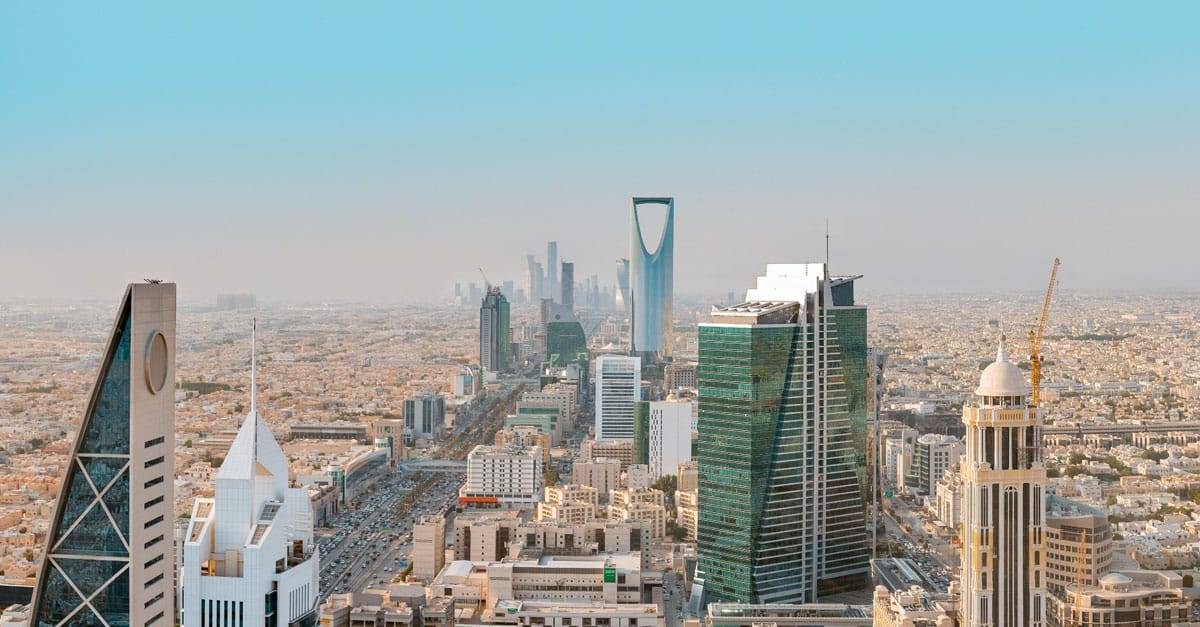
However, the prospect of investment in this resource-rich region has its risks. Navigating the volatile oil markets, understanding regional financial rules, and identifying profitable investment opportunities require specialised strategies. Add to this the complex tax laws that can differ drastically from one Middle Eastern country to another, and it’s evident that there is much to consider.
This article aims to cut through the complexity by looking at tailored investment strategies that UHNWI and HNWI in the Middle East can potentially leverage for optimal financial growth. Whether you’re concerned about financial risks or seeking ways to capitalise on regional investment opportunities, this guide offers exclusive insights and actionable advice, all while maintaining a balanced perspective on the uncertain nature of investment outcomes.
The Oil Sector: A Goldmine for UHNWI and HNWI
The Middle Eastern oil sector is incomparable regarding sheer wealth potential. That is why, UHNWI and HNWI are increasingly shifting their focus towards this resource-rich arena. The oil and gas sector contributes substantially to the GDP of various Middle Eastern countries; for instance, the sector makes up approximately 42% of Saudi Arabia’s GDP, according to data from the World Bank. These are not mere numbers, but powerful indicators of how integral oil is to the region’s financial fabric.
Tax Regulations and Regional Financial Rules
For UHNWI and HNWI, one of the most enticing aspects of investing in the Middle East’s oil sector is the range of tax benefits and favourable regional financial rules. Many Middle Eastern countries offer significant tax incentives to attract foreign investment in their oil and gas sectors.
Your Wealth, Our Priority: Altoo's Consolidation Power, Secure Document Management, and Seamless Stakeholder Sharing for High Net Worth Individuals. Preview Platform.
For example, the United Arab Emirates, a country in the middle of significant geopolitical shifts, has a zero per cent tax rate on oil and gas profits for foreign investors, creating an attractive opportunity for significant capital gains.
Moreover, public-private partnerships are becoming more common, allowing private investors to enter otherwise inaccessible markets. Regional financial rules also facilitate establishing holding companies and trusts that can offer additional layers of financial optimisation for the discerning investor.
It’s crucial, however, to consult with financial advisors well-versed in Middle Eastern tax laws to navigate the complex landscape successfully.
By strategically understanding and leveraging these tax benefits and regional financial rules, UHNWI and HNWI can potentially maximise their ROI, turning the Middle Eastern oil sector into a veritable goldmine.
Navigating Investment Opportunities
Investing in the Middle East’s oil sector can be exciting and complex, given the myriad options available to Ultra High Net Worth Individuals (UHNWI) and High Net Worth Individuals (HNWI). It’s not just about buying barrels; investment opportunities span various vehicles, each with its own potential benefits and pitfalls.
Direct Investments
Direct investments involve purchasing assets within the oil sector, such as drilling operations or shares in an oil and gas company located not just in the Arabian Peninsula but also in Central Asia or the United States. These assets offer direct exposure to the sector’s performance, thus carrying both substantial potential rewards and risks. For instance, investing directly in Saudi Aramco, one of the world’s most valuable companies, has been lucrative for investors. In 2019, the company paid out dividends worth $75 billion. However, such direct investments are also subject to volatile market conditions and geopolitical factors that could potentially erode profits.
Exchange-Traded Funds (ETFs)
Investing in oil through ETFs can offer portfolio diversification without the complexity of owning actual assets. ETFs like the SPDR S&P Oil & Gas Exploration & Production ETF have seen annual returns of approximately 30% in some years, as per the reports from Morningstar. However, they can also be affected by the broader market trends, diluting the focus on oil alone.
Partnerships
Joint ventures or partnerships with existing oil companies can offer a different avenue for UHNWI and HNWI. These arrangements usually involve profit-sharing and reduced risk due to diversified responsibilities. Yet, they require extensive due diligence and a robust legal framework, making them a long-term commitment that might only be suitable for some investors.
By understanding the complexities of these investment vehicles – each with its own set of potential upsides and downsides – you can make more informed decisions tailored to your financial goals.
Risk Management
While financial planning is critical in any investment portfolio, understanding your risk tolerance becomes especially crucial when navigating the Middle Eastern oil sector. For UHNWI and HNWI, understanding how to navigate these risks is essential for safeguarding their investments. Below, we delve into actionable guidelines on mitigating risks, diversification strategies, and understanding market volatility, especially in the context of the Middle East.
Mitigating Risks
One key to reducing risk is choosing the right investment vehicle. As highlighted earlier, options like ETFs offer portfolio diversification, reducing exposure to the downturns of individual companies or projects. A 2021 report by the CFA Institute, demonstrated that diversified portfolios have historically shown a 35% lesser standard deviation in returns than non-diversified portfolios.
Diversification Strategies
Diversification isn’t merely about spreading investments across different oil companies. You can consider broadening your investment horizon to include renewable energy or non-energy sectors like real estate. In the UAE, the renewable energy sector has shown significant growth, with investments rising by 2% year-on-year, according to the IRENA report. This could serve as a counterbalance to the natural volatility of oil markets.
Understanding Market Volatility
Understanding market volatility in the oil sector is influenced by various factors, from geopolitical tensions in the Persian Gulf to supply-demand imbalances that can even affect the stock market globally. As indicated by the World Bank, the price of crude oil can fluctuate by as much as 20% within a year. Awareness of these factors and incorporating them into your investment strategy can be invaluable.
Regional Considerations for Risk Management
In the Middle East, regional factors like political instability and economic sanctions could also play a significant role in investment risks. Having a risk assessment strategy that accounts for these unique regional considerations is crucial. By adopting a multifaceted approach to risk management that accounts for the unique regional considerations, UHNWI and HNWI can better secure their financial future in this dynamic sector.
Case Studies on Successful Investments
The theory of investment in the oil sector is one thing, but practical application often holds the most sway. Let’s delve into some real-world examples and hypothetical scenarios where UHNWI and HNWI have made profitable decisions in the oil sector. These case studies offer a snapshot of what’s possible and serve as a roadmap for investors.
For UHNWI and HNWI, who are diversifying their investment portfolio, this case illustrates the potential upsides of direct investment in major companies in the world like Saudi Aramco, especially for those who are well-positioned to absorb short-term market volatility and make sound investment decisions.
Sovereign Wealth Funds in the UAE
One of the most potent examples of successful investment in the Middle East’s oil sector can be seen in the operations of sovereign wealth funds in the UAE. Abu Dhabi Investment Authority (ADIA), one of the world’s largest sovereign wealth funds, holds diversified assets estimated to be worth around $828 billion as of 2021, according to the Sovereign Wealth Fund Institute. A significant portion of these investments are in the energy sector, both domestic and international, providing a stable and high return. Their strategy involves long-term investments and collaborations with industry leaders, offering a practical lesson in the power of strategic alliances and diversification.
Hypothetical Scenario: Individual Investment in Saudi Aramco
Consider a hypothetical HNWI who invested in the IPO of Saudi Aramco back in December 2019. The shares were initially priced at SAR 32 ($8.53) and saw an impressive 10% increase on the first day of trading alone. As of mid-2023, the share price hovers around SAR 42 ($11.2), representing a roughly 31% increase in value. This doesn’t even account for the dividend payments that the company has been consistently issuing. This case illustrates the potential upsides of direct investment in major oil companies, especially for those well-positioned to absorb short-term market volatility.
Statistical Validation: ROI in Energy Sector ETFs
As mentioned in a 2022 report by J.P. Morgan, energy sector ETFs like the Energy Select Sector SPDR Fund have shown an average annual return of 9% over the last five years. For a wealthy individual, this could translate into significant gains, given the scale of their investments. It also illustrates the benefit of diversifying investments through financial products that track multiple assets, thereby reducing risk.
Each case study illustrates key points about the opportunities available in the Middle Eastern oil sector. They highlight the importance of diversification, the potential for high returns on direct investments, and the lesser-known investment vehicles that offer stability even in volatile markets.
By studying these examples, both hypothetical and actual, UHNWI and HNWI can glean actionable insights into navigating the often complex but potentially rewarding world of oil investments.
In conclusion, the Middle East’s oil sector presents a multifaceted investment landscape for UHNWI and HNWI. From direct investments in oil companies to diversifying via energy sector ETFs, the avenues for potentially lucrative returns are abundant. However, successful navigation of this sector also demands careful risk assessment and a keen understanding of regional financial rules.






